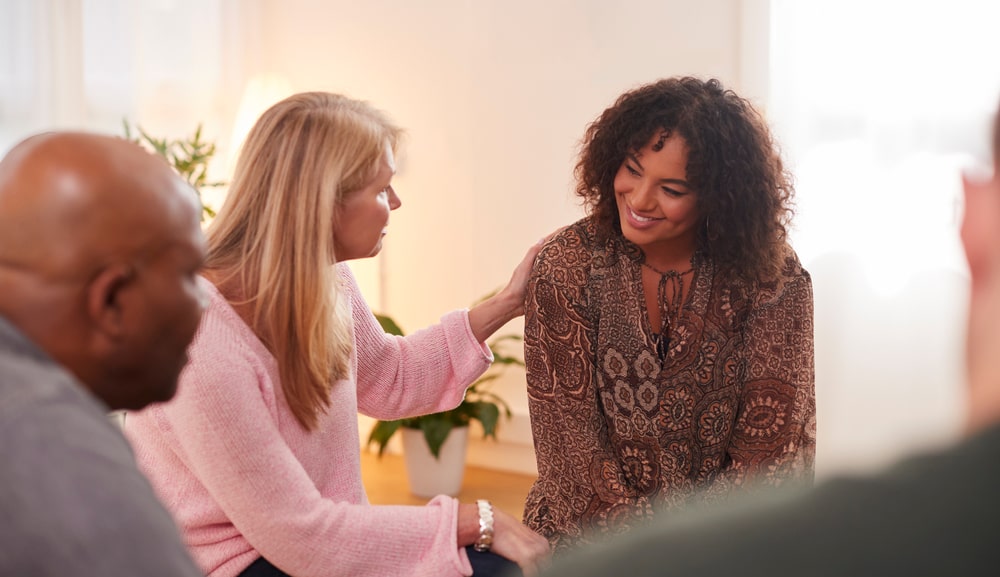
By Dr. Alan D. Wolfelt
If you could go back in time and relive a special holiday, which one would you choose? Close your eyes for a moment and think about this holiday. Now, slowly, walk through this memory in your mind.
What made it so special? What were the surroundings like? Who inhabits this memory with you?

Holidays have such rich associations for us because humankind created them as a way to honor and celebrate that which is truly important. We step out of the hustle and bustle of our day-to-day routines and into a world where our spiritual beliefs and connection to others matter above all else. We pause to give thanks, and we share of ourselves.
As the Grinch learned that memorable Christmas, the holidays don’t really come from a store – they come from the heart and soul.
Which is why when someone loved dies, the holidays can be so painful. The heart of the holidays has been torn apart. Without love, what is life? Without the people we love, what are the holidays?
I want you to know that you can find continued meaning in the holidays and in life. You can continue to live and love fully. You must grieve, but you can also celebrate.
Setting Your Intention to Heal
It takes a true commitment to heal in your grief. Yes, you are changed, but with commitment and intention, you can and will become whole again. Commitment goes hand in hand with the concept of “setting your intention.” Intention is defined as being conscious of what you want to experience. A close cousin to “affirmation,” it is using the power of positive thought to produce a desired result.
How can you use this in your journey through holiday grief? By setting your intention to heal.
Turning to Ritual
Setting your intention to mourn and heal during the holidays – and beyond – is one important way to move forward in your grief journey. Harnessing the power of ritual is another. We create holiday rituals because everyday activities and normal conversations cannot capture our most profound thoughts and feelings. Rituals give them voice and shape. So, we decorate our Christmas trees, light our menorahs, give gifts, hold hands, and say prayers.
During your times of grief, the very rituals of the holidays can help you survive them. Try participating in some of your normal holiday traditions but with a focus on grief. When you light candles in your home, do it in honor or the person who died. You might also create a special holiday ceremony or private ritual in memory of the person who died. The holidays are ritualistic, and ritual can help you survive (and heal) right now. Remember this when you are considering whether or not to participate in your next holiday tradition.
Living in the Now
Return once more to the holiday memory I asked you to conjure up at the beginning. This memory is so special to you because you were so very present in the moment. When your grief overwhelms you this holiday season, try focusing on the now. Your grief wants you to live in the past through memories of the precious person who died. Remembering is indeed important, and your memories will always be a special part of your life.
Your grief will also project you into the future at times. You will worry about what the coming months and year hold for you. Looking ahead is also a normal and natural part of grief.
But when remembering and projecting exhaust you – and they will – return yourself to the present moment. Concentrate on what is going on around you right now. Hear the sounds and see the sights. Try drawing on the power of now to find continued meaning in your holidays and in your life.

You’ll notice I have used the generic term “holiday season.” By that, I mean the winter holidays bookended in the United States by Thanksgiving and New Year’s Day. In between are the spiritual/religious holidays of Christmas, Hanukkah, and Kwanzaa. But whatever holidays you celebrate, and no matter where you live, the principles apply to the holidays that are most meaningful for you – including other holidays, birthdays, and anniversaries sprinkled throughout the calendar year.
A List of Ideas to Heal Your Holiday Grief
Be Compassionate with Yourself
Let your holiday grief be what it is. And let yourself – your new, grieving self – be who you are.
Survive
If the death was very recent, you may be in survival mode this holiday season. If that’s true for you, it’s OK – the world will keep turning whether you participate in the holidays or not.
Keep What Matters
You might consider simplifying your holiday rituals instead of abandoning them altogether. Keep the traditions that matter most to you and set the others aside, at least for now.
Communicate Your Wishes
Muster the strength and courage to tell the people in your life what your wishes are for the holidays. If you’d like their company but prefer to gather somewhere different than you usually do, say so. If you’d rather skip some of the celebrations this year, tell them. If you’re feeling unsure about how to spend the holidays, tell them.
Attend a Remembrance Ceremony
Many hospitals, hospices, and funeral homes host remembrance ceremonies during the holidays. The act of joining together in our grief and ritualizing our mourning can be healing. Especially early in their grief, many families say that it was the most important thing they did during the holidays.
Hang a Special Stocking
If your holiday traditions include hanging stockings, consider hanging a special stocking in memory of the person who died.
Be a Secret Santa
You could probably use some “feeling good” this holiday season. Give yourself a dose of pleasure by giving to someone else.
Prepare Favorite Holiday Foods of the Person Who Died
Special foods are an important part of the holiday traditions. Chances are, your family prepares many of the same dishes each holiday, and everyone looks forward to those unique smells and flavors.
If You’re Alone, Find Ways to Connect
If you’re alone this holiday season, you would be well-served to make an effort to connect with other human beings. Invite your neighbor to dinner. Volunteer at a homeless shelter or nursing home. Join a group at a place of worship.
Make an Appointment with a Grief Counselor
Seeing a counselor or spiritual advisor for just a session or two over the holidays may help you cope better and focus more on what is important to you this year and what is not.
Count Your Blessings
Think of all you have to be thankful for. This is not to deny the hurt, for the hurt needs to take precedence right now. But it may help to consider the things that make your life worth living, too.
Believe in a Better Next Year
Believe in your capacity to heal and grow through grief. Believe in the enduring holiday spirit of giving and love.
About the Author
Alan D. Wolfelt, Ph.D., is the founder and director of Center for Loss and Life Transition and a member of the TAPS Advisory Board. This article is excerpted from his book, Healing your Holiday Grief: 100 Practical Ideas for Blending Mourning and Celebration During the Holiday Season, published by Companion Press and available at www.centerforloss.com.
Printed with permission from Dr. Alan D. Wolfelt, Center for Loss and Life Transition.










































































